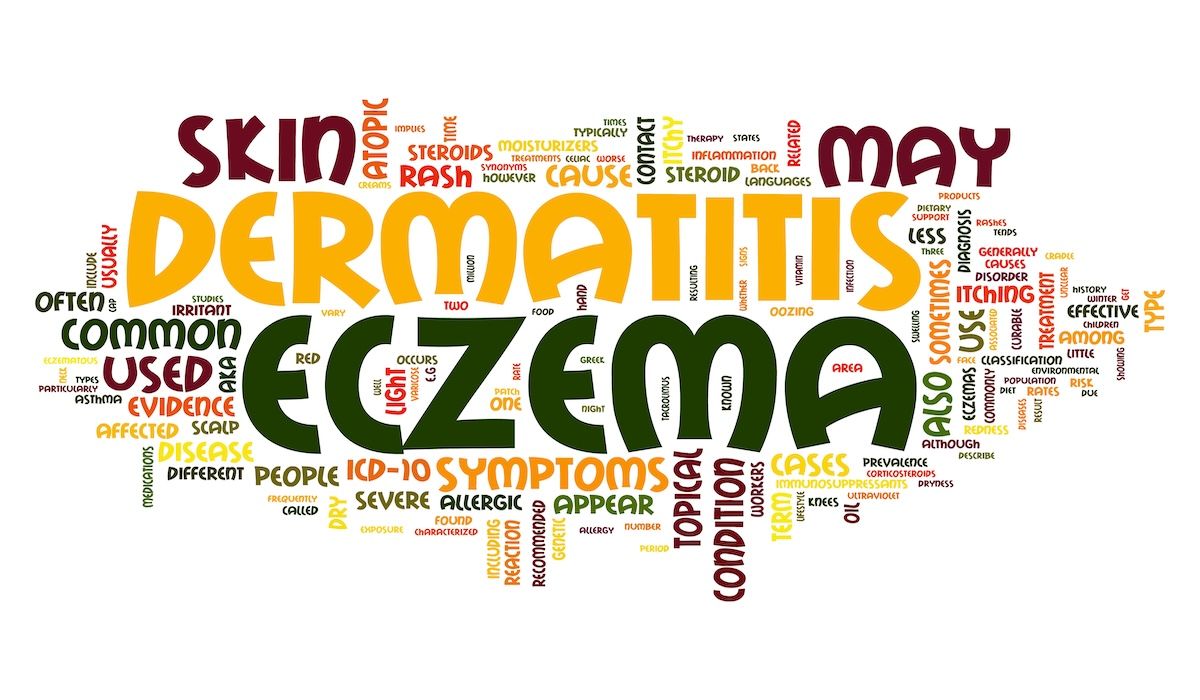- Center on Health Equity & Access
- Clinical
- Health Care Cost
- Health Care Delivery
- Insurance
- Policy
- Technology
- Value-Based Care
Atopic Dermatitis Skin Clearance Maintained Over 3 Years With Lebrikizumab
Lebrikizumab shows sustained efficacy and safety in managing moderate to severe atopic dermatitis over 3 years, reducing the need for rescue therapies.
Skin clearance improvement in patients with moderate to severe atopic dermatitis and lebrikizumab safety were both maintained with continuous administration of the IL-13 receptor inhibitor at 250 mg every 2 weeks or every 4 weeks for 3 years in the ADjoin trial (NCT04392154), an extension analysis of 3 prior trials.1
Presented at the 2025 Society for Pediatric Dermatology Annual Meeting, this new research also demonstrates that longer use of lebrikizumab did not increase the risk of adverse effects nor did most patients require rescue therapy over the 3 years—both those who were and were not also receiving topical corticosteroids (TCS).
Participants in ADjoin came from the ADvocate1 (NCT04146363), ADvocate2 (NCT04178967), and ADhere (NCT04250337) trials. All randomized, double-blind, placebo-controlled, parallel-group studies, ADvocate1 and ADvocate2 were 52 weeks’ duration, and ADhere was 16 weeks’ duration, and patients had to be at least 12 years old and have chronic atopic dermatitis (at least 1 year) before the study screening visit to quality for inclusion.2-4 To calculate patient maintenance on treatment, the ADjoin study team used an Investigator Global Assessment (IGA) score of 0 or 1 (clear or almost clear skin), Eczema Area and Severity Index–75 (EASI-75; ≥75% reduction in EASI score), and EASI-90 (≥90% reduction in EASI score) for week 16 responders from any of the parent studies who saw these improvements. Efficacy was evaluated among original ADvocate1/2 participants during their maintenance phase (weeks 16-52) plus 100 weeks in ADjoin, and among ADhere participants, from week 16 to week 116 in ADjoin.1
Overall, the rates of patients not requiring rescue treatment were significant. For the patients from ADvocate1/2 receiving lebrikizumab every 4 weeks in ADjoin (n = 99), 86%, 95%, and 91% did not need TCS, topical calcineurin inhibitors (TCI), or systemic therapies (corticosteroids, immunosuppressants, biologics, phototherapy, and photochemotherapy), respectively. The corresponding rates for ADhere to ADjoin participants (n = 29) were 21%, 90%, and 97%. Next, among ADvocate1/2 patients receiving lebrikizumab every 2 weeks in ADjoin (n = 82), 90%, 94%, and 96% did not need TCS, TCI, or systemic therapies; neither did 30%, 98%, nor 89% of ADhere to ADjoin participants (n = 57).
To calculate patient maintenance on treatment, the ADjoin study team used an Investigator Global Assessment score of 0 or 1, Eczema Area and Severity Index–75, and EASI-90 for week 16 responders from any of the parent studies who saw these improvements. | Image Credit: © Words Collage Cloud-stock.adobe.com

Looking at IGA (0,1) response rates, 84% of patients from ADvocate1/2 receiving lebrikizumab every 4 weeks and 82.9% receiving lebrikizumab every 2 weeks maintained the results they had achieved by the end of their maintenance phase (week 52) through 152 weeks. For week 16 through week 116 for the ADhere patients, these observed rates were 91.7% and 86.7%, respectively.
EASI-75 and EASI-90 overall response trended similarly. Using EASI-75, the study investigators saw long-term patient response rates of 94.1% from lebrikizumab every 4 weeks and 90.5% from lebrikizumab every 2 weeks for ADvocate1/2 participants. The corresponding rates seen in the ADhere participants were 90.9% and 94.9%. Using EASI-90, the study investigators saw long-term patient response rates of 86.8% % from lebrikizumab every 4 weeks and 79.4% from lebrikizumab every 2 weeks. The corresponding rates among the ADhere participants were 86.4% and 84.6%.
More than half of patients of patients from the parent studies (58.6%-72.0%) reported at least 1 mild or moderate treatment-related adverse event (AE), and there was just 1 patient death deemed related to natural causes. Seven patients overall discontinued treatment because of an AE, but no malignancies were reported and rates were low for herpes infections (3.0%-7.3%), skin infections (1.2%-3.0%), potential opportunistic infections (0%-4.9%), and parasitic infections (0%-1%). These rates did not increase over time, the study investigators noted.
“These long-term 3-year data demonstrate that lebrikizumab provides disease control over time,” the authors write, “and helps inform clinical practice in a chronic and relapsing disease.”
References
- Guttman-Yassky E, Irvine A, Simpson E, et al. Long-term efficacy and safety of lebrikizumab is maintained in patients with moderate-to-severe atopic dermatitis: results up to 3 years from ADjoin. Presented at: Society for Pediatric Dermatology Annual Meeting; July 23-26, 2025; Seattle, WA. Poster POS-14.
- Evaluation of the efficacy and safety of lebrikizumab (LY3650150) in moderate to severe atopic dermatitis (ADvocate1). ClinicalTrials.gov. Updated November 30, 2022. Accessed August 27, 2025. https://clinicaltrials.gov/study/NCT04146363
- Evaluation of the efficacy and safety of lebrikizumab (LY3650150) in moderate to severe atopic dermatitis (Advocate2). ClinicalTrials.gov. Updated May 24, 2023. Accessed August 27, 2025. https://clinicaltrials.gov/study/NCT04178967
- Long-term safety and efficacy study of lebrikizumab (LY3650150) in participants with moderate-to-severe atopic dermatitis (ADjoin). ClinicalTrials.gov. Updated August 3, 2025. Accessed August 27, 2025. https://clinicaltrials.gov/study/NCT04392154
